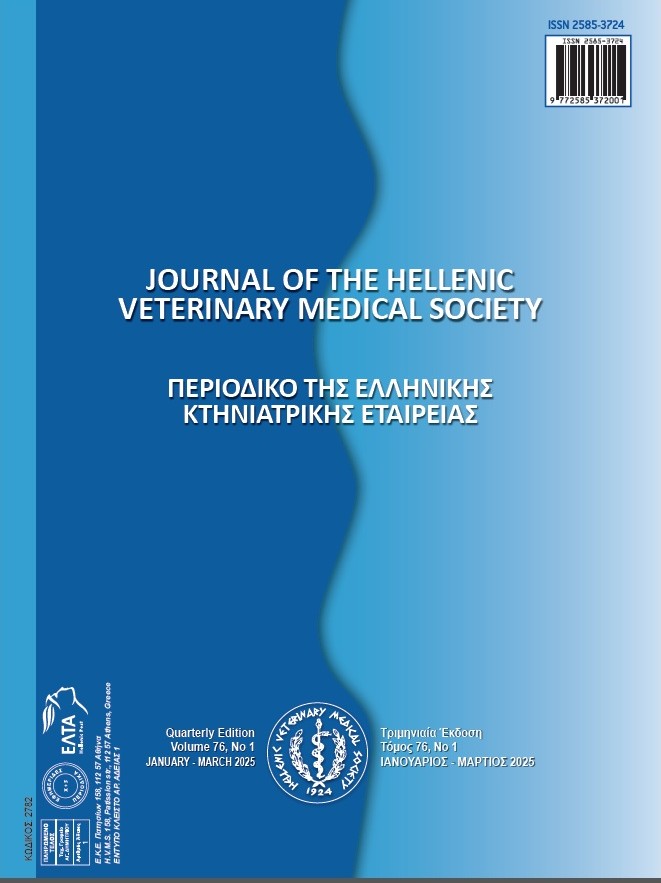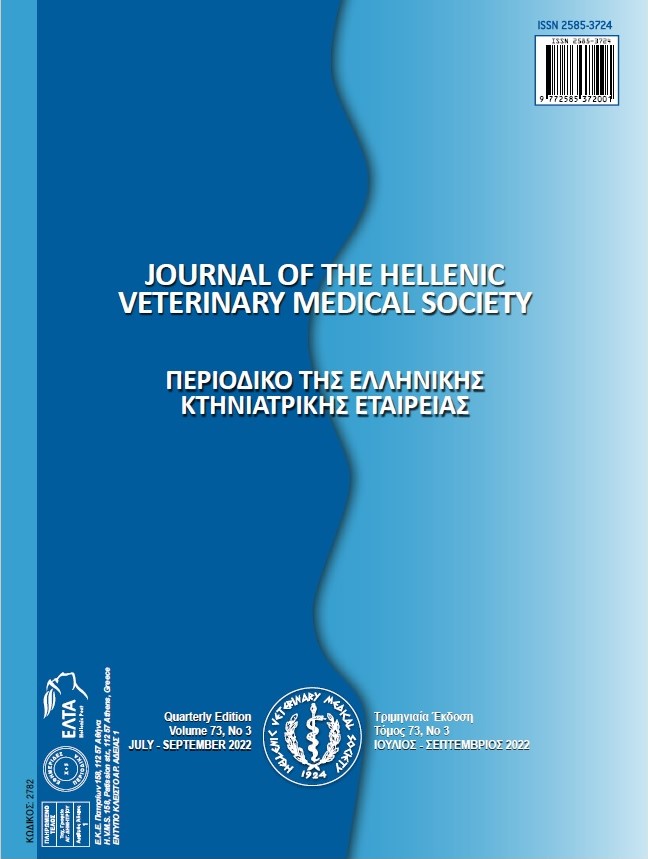Evaluation of Retinol, Cholecalciferol, α-Tocopherol and Phylloquinone levels in naturally infected calves with eimeriosis

Abstract
The aim of this study was to evaluate whether serum vitamin A (retinol), vitamin D (cholecalciferol), vitamin E (α-tocopherol), and vitamin K (phylloquinone) levels changed in naturally infected calves with coccidiosis. The study was conducted on a total of 70 calves, 55 with coccidiosis and 15 healthy (control) calves of different races, sexes, and ages ranging from 26 to 60 days, with complaints of bloody diarrhea, weight loss and tenesmus. As a result of statistical analysis; serum vitamin A, D, E, and K concentrations of calves with coccidiosis were significantly lower than the control group (P<0.001). In the correlation between parameters in calves with coccidiosis; in Pearson correlation for calves with coccidiosis, between serum retinol (vitamin A), cholecalciferol (vitamin D), α-tocopherol (vitamin E), and phylloquinone (vitamin K) levels respectively; Positive correlation was detected at the levels of 0.996, 0.996, and 0.990. As a result; significant decreases were detected in serum retinol (vitamin A), cholecalciferol (vitamin D), α-tocopherol (vitamin E), and phylloquinone (vitamin K) levels concentrations of calves with coccidiosis. It can be thought that the use of preparations containing vitamin A, D, E, and K may be beneficial in addition to the routine treatments in cases of coccidiosis or other diarrhea.
Article Details
- How to Cite
-
Denizhan, V., Kozat, S., & Ekin, S. (2025). Evaluation of Retinol, Cholecalciferol, α-Tocopherol and Phylloquinone levels in naturally infected calves with eimeriosis. Journal of the Hellenic Veterinary Medical Society, 76(1), 8555–8562. https://doi.org/10.12681/jhvms.34707
- Issue
- Vol. 76 No. 1 (2025)
- Section
- Research Articles

This work is licensed under a Creative Commons Attribution-NonCommercial 4.0 International License.
Authors who publish with this journal agree to the following terms:
· Authors retain copyright and grant the journal right of first publication with the work simultaneously licensed under a Creative Commons Attribution Non-Commercial License that allows others to share the work with an acknowledgement of the work's authorship and initial publication in this journal.
· Authors are able to enter into separate, additional contractual arrangements for the non-exclusive distribution of the journal's published version of the work (e.g. post it to an institutional repository or publish it in a book), with an acknowledgement of its initial publication in this journal.
· Authors are permitted and encouraged to post their work online (preferably in institutional repositories or on their website) prior to and during the submission process, as it can lead to productive exchanges, as well as earlier and greater citation of published work.



